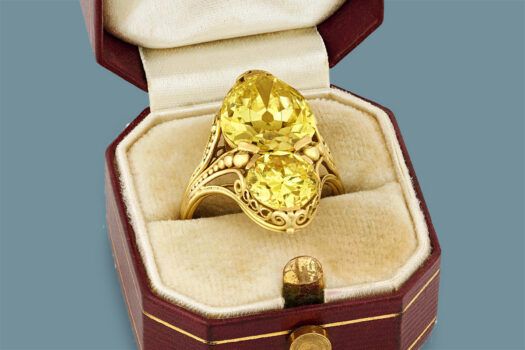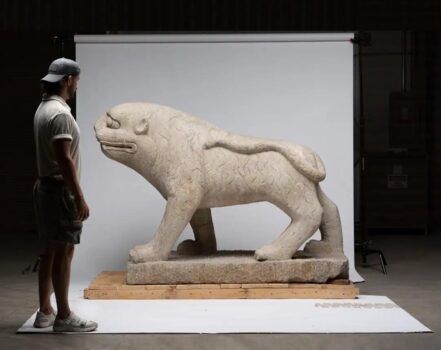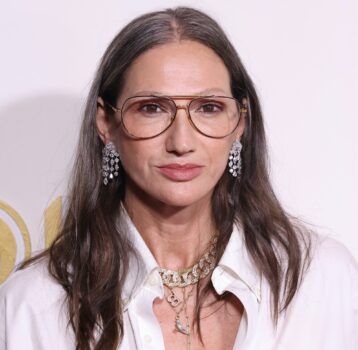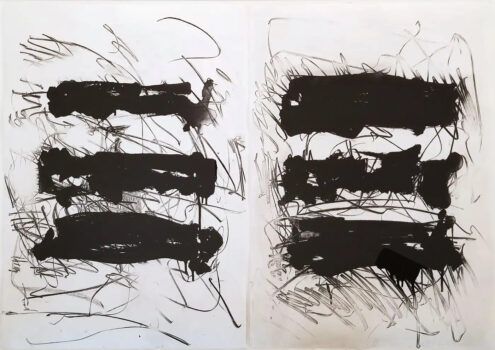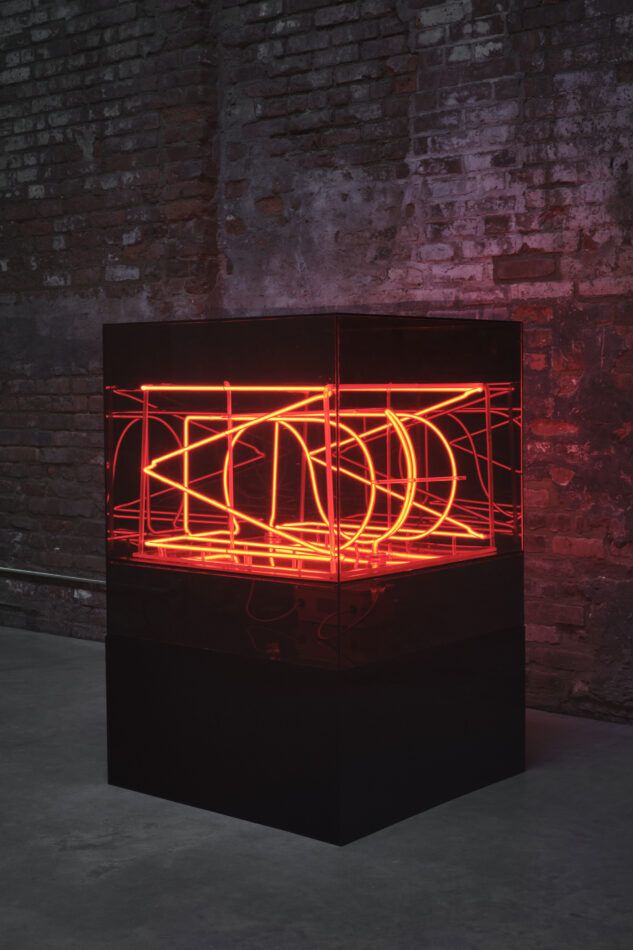
Famously inspired by the buzzing tangle of electrified signs in New York City’s Times Square, Chryssa Vardea-Mavromichali recontextualized, rotated, repeated and jumbled letterforms and odd bits of text in her sculptures and paintings.
Born in Greece in 1933, the artist known simply as Chryssa moved from Athens to New York in the 1950s to live in the epicenter of the modern art world. By the end of the following decade, she’d become a sensation, with a Guggenheim Museum solo show under her belt, frequent reviews in art publications, coverage in Time magazine, many pieces in museum collections and inclusion in the first edition of H. H. Arnason’s seminal textbook, History of Modern Art.
Her work overlapped with (and sometimes predated) the minimalist, conceptual, Pop and light art movements, but it was very much its own thing. We see the themes underlying all of those schools luminously expressed in USA, First Preparatory Work for a Neon Box, 1962, now on view in the exhibition “Chryssa & New York” at the Menil Collection in Houston.
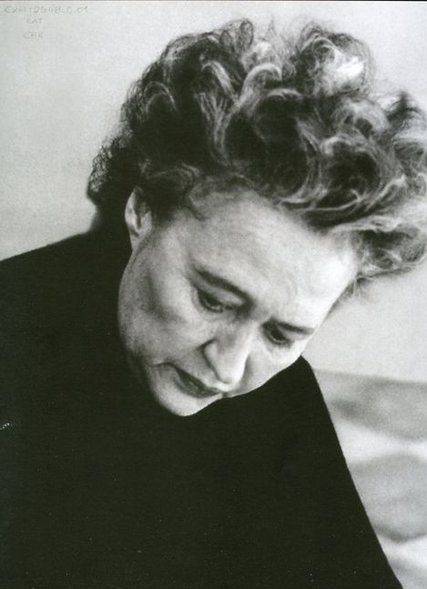
The sculpture comprises convoluted red and orange neon tubes inside a gray-tinted plexiglass box that’s meant to evoke the smoggy atmosphere of 1960s Times Square. The continuously flowing neon takes all sorts of zigs and zags to spell out the semilegible letters USA, tipped on their sides and repeatedly reflected within the box’s walls.
“We often talk about Chryssa’s interest in letters being more about their formal elements and using these characters as tools for abstraction,” says Dia Art Foundation curator Megan Witko, who organized the show with the Menil’s Michelle White. “There are very few examples of her work where the individual letters actually form a specific word — and this is one of those examples.”
As the name indicates, USA, First Preparatory Work for a Neon Box, is the earliest in a series of boxes incorporating neon, a material intimately linked to advertising.
“Chryssa’s work regularly ruminated on images of the neons in Chinatown and Times Square and what those beautiful signs implied,” says Emma Reinhardt, of RoGallery, which represents the piece. “I think it’s very poetic that her first full foray into playing with the commercial medium is to light up the letters USA, as if she is putting the country itself up for sale while she contemplates the shape of the letters.”
The neon boxes soon led to Chryssa’s magnum opus, The Gates to Times Square, 1964–66, which she unveiled in a solo show at the then-upstart Pace Gallery. That epic assemblage unites neon lights, metal scaffolding, drawings inside vitrines, old signs and more in a monumental structure that’s like a mid-century update of an ancient gateway arch.
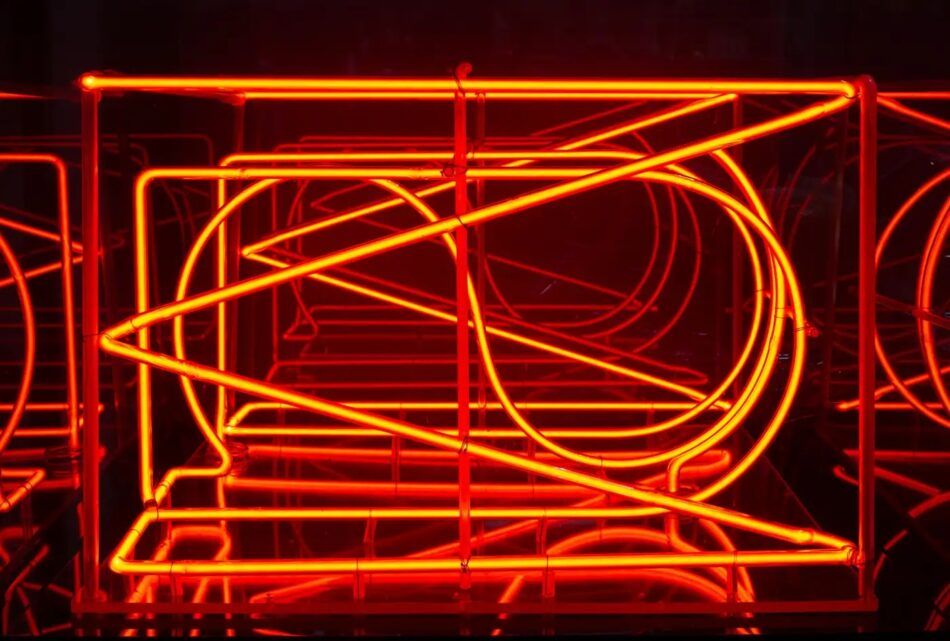
In addition to featuring First Preparatory Work for a Neon Box, “Chryssa & New York” marks the triumphant return of The Gates after a major restoration. The show, which premiered at Dia’s Chelsea space last year, remains on view at the Menil through March 10 and travels to Chicago’s Wrightwood 659 in the summer.
“Viewers will be surprised by the vast array of different media that Chryssa was exploring in a relatively compact period of time,” Witko says. “I am awed by the amount of creativity she had at this time, and I think you can really see that in the leaps she’s taking in her work.”
Maybe someday, Chryssa’s pioneering neon creations will also return to their source of inspiration, Times Square, where they can mingle with the even brighter and more hyperactive LED screens that light up the streets in the 21st century.

